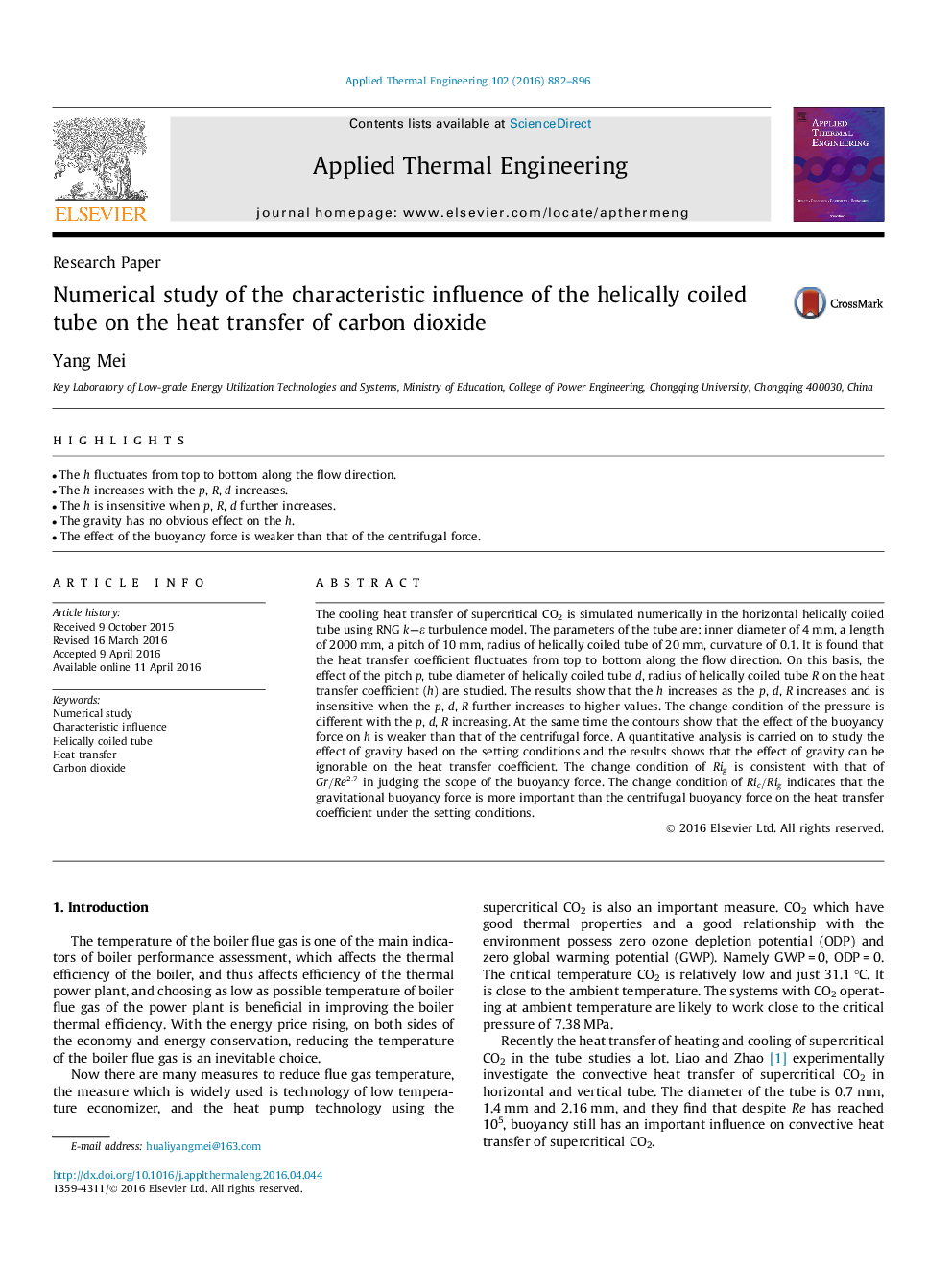| Article ID | Journal | Published Year | Pages | File Type |
|---|---|---|---|---|
| 7048281 | Applied Thermal Engineering | 2016 | 15 Pages |
Abstract
The cooling heat transfer of supercritical CO2 is simulated numerically in the horizontal helically coiled tube using RNG k-ε turbulence model. The parameters of the tube are: inner diameter of 4 mm, a length of 2000 mm, a pitch of 10 mm, radius of helically coiled tube of 20 mm, curvature of 0.1. It is found that the heat transfer coefficient fluctuates from top to bottom along the flow direction. On this basis, the effect of the pitch p, tube diameter of helically coiled tube d, radius of helically coiled tube R on the heat transfer coefficient (h) are studied. The results show that the h increases as the p, d, R increases and is insensitive when the p, d, R further increases to higher values. The change condition of the pressure is different with the p, d, R increasing. At the same time the contours show that the effect of the buoyancy force on h is weaker than that of the centrifugal force. A quantitative analysis is carried on to study the effect of gravity based on the setting conditions and the results shows that the effect of gravity can be ignorable on the heat transfer coefficient. The change condition of Rig is consistent with that of Gr/Re2.7 in judging the scope of the buoyancy force. The change condition of Ric/Rig indicates that the gravitational buoyancy force is more important than the centrifugal buoyancy force on the heat transfer coefficient under the setting conditions.
Related Topics
Physical Sciences and Engineering
Chemical Engineering
Fluid Flow and Transfer Processes
Authors
Yang Mei,
